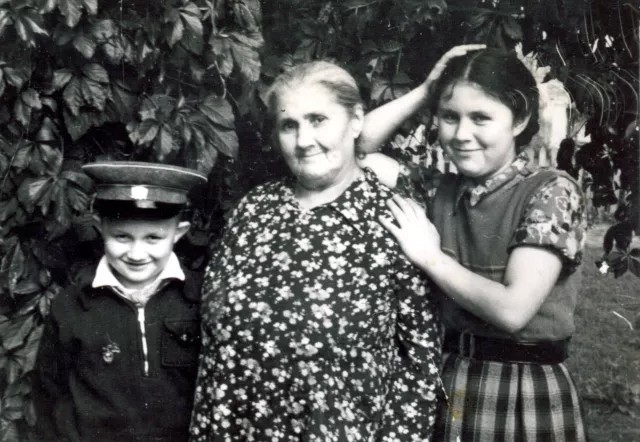This is me, Kurt Sadlik, after I was released from a Soviet concentration camp and my wife Ludmila Sadlik (nee Protopopova). This photo was taken in Norilsk in 1953.
I was released in 1953 after Stalin died. The director of the camp called me to his office and just said ‘Released.’ I was in prison for six years of my ten-year sentence. For many people Stalin’s death was a shock, even in the camp, but not so for me. I was happy that such a monster of cruelty croaked. However young I was I understood that all this suffering was his doing.
I obtained a certificate of release at the head office of the camp. My name was written as Karol Karolevich instead of Kurt Karlovich in it and they wrote a wrong year of birth: 1926 instead of 1928. Perhaps, they made me two years older intentionally to make me of age in court. I don’t know.
This certificate was my only document. I didn’t have permission to leave Norilsk, though. Every Saturday I had to register at the district militia office. I worked at the same mine where I had worked being a prisoner. The only difference was that I lived in a hostel for employees. There were seven of us in a room. I had meals at a diner at the mine. The accounting office deducted the cost of meals from my salary and the rest of it was mine.
I met my future wife in the hostel. She wasn’t a prisoner. Ludmila Protopopova was Russian, she was born in Novosibirsk in 1922. I know little about her family. Her father, Ignat Protopopov, went to the army and perished at the front during World War II. Ludmila’s mother starved to death. Ludmila couldn’t find a job in Novosibirsk after finishing a secondary school. She went to Norilsk where her maternal aunt lived and went to work as assistant accountant at a mine.
We began to see each other. I couldn’t marry Ludmila even when she got pregnant. The only document I had was my certificate of release. I was eager to restore my Slovakian citizenship, but it was out of question. In all offices I addressed they told me this was impossible.
I had little choice: either rot to death at the mine in Norilsk or obtain Soviet citizenship however much I hated this country. And I got this damned Soviet citizenship. We lived in Norilsk until 1955 and after I became a Soviet citizen we went to Novosibirsk, Ludmila’s home town. In 1956 our daughter Vera was born.









